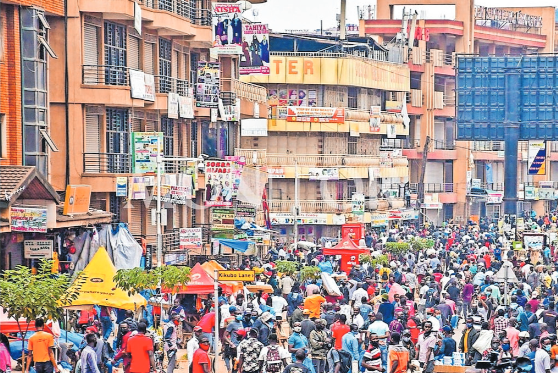Prime
Uganda is Africa’s most city-rich nation. No joke
What you need to know:
- A wise man once said only a fool tries to create a city. For cities, to live up to the name, need to be organic. They need an economic logic, and dynamic social and cultural factors around which they grow.
As at last Saturday, August 22, the population of Kenya was estimated to be just over 53 million.
Kenya covers an area of 580,367 square kilometres. Its economy in nominal gross domestic product (GDP) is $99.246 billion. As of the same August 22, Uganda’s population was estimated to be nearing 46 million. Uganda is 241,037 square kilometres. Our nominal GDP is estimated to be $33.930 billion today.
Kenya’s population is six million larger than ours, and the country is twice as big as Uganda. Its economy is three times bigger than ours. Which of these two countries do you think would have more cities? If you didn’t know anything else about these two countries except what is stated above, you would think Kenya. And you would be wrong. Kenya has only three cities - Nairobi the capital, Mombasa at its Indian Ocean coast, and the Lake Victoria (Nalubaale) side city of Kisumu.
After the recent decisions by the government and Parliament, Uganda is the one with the most cities, 10 of them - Arua, Gulu, Mbale, Jinja, Mbarara, Fort Portal, Lira, Soroti, Hoima, and Masaka. Between next year and 2023, at least five more towns could become cities, making Uganda by far the most city-rich nation in Africa.
A wise man once said only a fool tries to create a city. For cities, to live up to the name, need to be organic. They need an economic logic, and dynamic social and cultural factors around which they grow.
Perhaps the most organic town in Uganda today is Mukono. It is messy, yes, but beginning the time of our friend Idi Amin when his security services sowed terror, there was a migration to the relative safety of Mukono. An agricultural economy started to develop around it to feed the rising population, and eventually Kampala.
A further shift of both merchant and agricultural capital to Mukono rose sharply in the early 1980s as the war between the UPC government and Yoweri Museveni’s National Resistance Army rebels raged in Luweero and Wakiso districts, devastating fields and killing thousands of people.
That then combined with a long-running migration from eastern Uganda to Mukono that started in the late 1960s. This migration was driven largely by climate change, as people fled the tired overpopulated soils of eastern Uganda to the lush lands of Mukono, which are rich in water.
A new dynamic was born out of this diversity. Schools mushroomed, and the magic continued to happen. Going by these factors, Mukono deserves to be designated a city. It won’t, because of politics. It would give the Buganda region four cities, and it’s too close to Kampala.
And that really is where the rub is.
The 10 cities have been slated for political reasons, as new sources of support for Museveni’s presidency-for-life project, than for economic reasons. It is like the districts, and mushrooming seats in Parliament.
The joke goes that if Museveni rules Uganda for another 10 years, soon every village will have its constituency (MP), every clan its town, and every district its city.
However, not all is lost. On the list of 10, one can see a serious possibility and an economic pay-off from developing Mbarara, Arua, Lira, Jinja, and Mbale into cities. Except for Mbale, these have possibilities for something important to a city that, in Kenya, Mombasa and Kisumu, have; airstrips that can be turned into near-international airports. But even with the 10, a different way to build new cities for Uganda is not to create taxpayer sucking bureaucracies and spend money on office buildings. It is to invest in infrastructure, and make a series of clever policy decisions.
So, the following actions would create fertile ground for city dreams come true more organically. First, increase the supply of electricity to the 10. Second, increase their water capacity and build new sewerage systems (Mbarara, after all, has a serious water problem) and none of them have a modern sewerage system. Third, ensure all the land in these areas is titled. Fourthly (and some of this is underway) create economic (or export zones) in these targeted cities.
Fifth, build out all the roads from these towns to the neighbouring countries. Sixth, create a new range of incentives for investment in agriculture, and fund food storage infrastructure. Seventh, reform agriculture and pass legislation to create commodity exchanges.
Eighth, build a railway loop to these towns. Ninth, modernise Uganda’s education and make it a big attraction for the sub-region. Tenth, build small to medium airports in public private partnerships in all these towns.
In fact, apart from water, sewerage, and electricity, the airports, railways, roads, can all be private with owners charging user fees. All Kampala would have to do is the least expensive of these actions; pass the damn laws and make good policy.
Mr Onyango-Obbo is a journalist,
writer and curator of the “Wall of Great Africans”. Twitter@cobbo3




